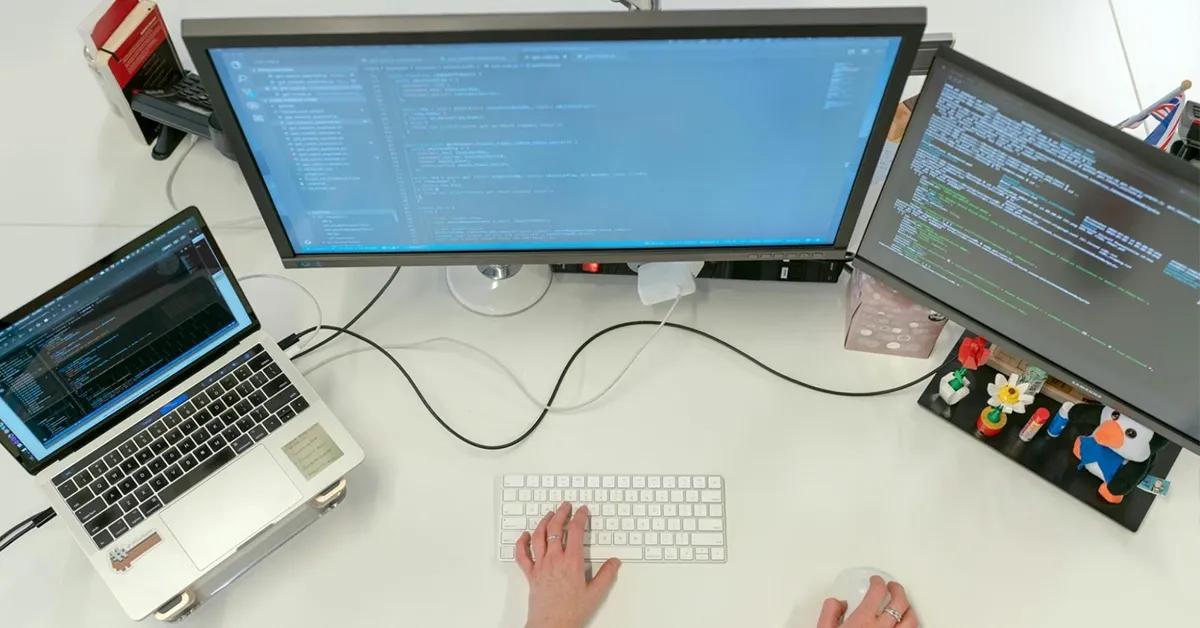Software testing should not be an afterthought—it should be built into the foundation of the software development process. Instead of addressing issues after they appear, why not prevent them from happening in the first place? This is what shift-left testing is about. In this blog post we will explore this approach in more detail, looking at how it can be implemented, benefits, and best practices. Let’s start with a brief definition.
What is shift-left testing?
Shift-left testing is a software development practice that involves moving software testing and quality assurance earlier in the development process, typically starting during the planning and development stages. This proactive strategy aims to identify and address issues sooner, reducing the likelihood of costly fixes later on, while promoting a focus on quality from the outset.
The shift-left approach changes how quality assurance is integrated into the software development lifecycle (SDLC). Traditionally, QA was done at the end of the development process, often leading to costly delays and rework due to finding critical issues too late. Instead, shift-left testing encourages QA and security practices early in the planning and development stages. This approach involves the entire team and ensures that quality is built into the project from the very beginning.

This means starting testing as early as possible to get quick feedback and help the team make better, more informed decisions. Shift-left testing makes sure that QA is integrated throughout the development process, ensuring that QA engineers are fully aware of delivery schedules and requirements.
How to perform shift-left testing
There are various steps to performing shift-left testing effectively and make sure your project starts off on the right foot.
Involve quality assurance early
Before sprint planning, it’s important to hold a refinement session where the team reviews the product owner's stories. During this session, designs and user stories should be ready, allowing the team to collaborate, ask questions, and identify any missing details.
Goals of the refinement session:
- Testability. QA ensures that all acceptance criteria are testable.
- Understanding. The entire team understands the user story.
- Clear criteria. QA can plan and execute testing based on measurable criteria.
Additionally, this session should include:
- Feedback integration. Incorporate feedback from the session into user stories and criteria to resolve any issues or ambiguities.
- Collaboration tools. Utilize tools to document discussions and decisions, ensuring all team members have access to the latest information.
- Risk identification. Identify potential risks or dependencies to address them early.
- Continuous improvement: Apply lessons learned from past sprints to enhance future refinement sessions.
If a user story has unclear or untestable criteria, it should be sent back for revision. This ensures that QA processes can proceed with well-defined criteria and effective test planning.
Focus on test coverage and efficiency
QA teams are required to create at least one test case for each acceptance criterion, with each test case being traceable back to its respective criterion. Once the refinement session is complete, QA engineers can begin designing test cases, ensuring comprehensive testing coverage.
During testing, any bugs discovered should be logged against the specific user story. Test cases and test results should be reviewed regularly, and feedback should be incorporated to enhance testing coverage and effectiveness. Where possible, automated tests should be utilized to increase efficiency and maintain consistency.
A user story can only be marked as complete once all related bugs have been resolved and tasks are closed. This approach ensures that each user story is thoroughly tested, meets all defined criteria, and has a well-documented testing history before it is considered finished.
Leverage automated testing
Test automation can significantly enhance shift-left testing. Critical test scenarios and regression tests covered by automated testing will ensure faster feedback loops on code changes. This reduces manual testing efforts and allows testers to focus more on exploratory testing and complex testing scenarios.
Focus on effective cross-team communication

Effective communication within the team is crucial for maintaining a fast-paced, iterative workflow. Quick and continuous feedback from QA engineers to developers helps them to address and resolve any issues swiftly. Regular meetings, such as daily stand-ups and sprint retrospectives, help keep everyone aligned .
Additionally, using collaborative tools like Discord, JIRA, or Confluence can help communication and ensure that everyone stays informed about the project's progress and potential roadblocks. Effective communication ensures that teams work towards a common goal, ultimately leading to a higher quality product and a smoother, more efficient development process.
Main benefits of shift-left testing
Shift-left testing offers numerous advantages that can greatly improve the efficiency and quality of software development. Here are some of the key benefits:
- Earlier bug detection. Identifying defects early in the development cycle reduces the time and cost needed to fix them, preventing critical issues from being discovered late in the process.
- Improved product quality. By integrating testing throughout the development process, Shift-left testing ensures that quality is built in from the start, resulting in a more stable and reliable product.
- Enhanced collaboration. Shift-left testing encourages cross-functional collaboration between QA, developers, and other team members, aligning everyone towards a common goal of quality and efficiency.
- Reduced rework. Catching and resolving issues early decreases the need for extensive rework and reduces the likelihood of costly delays or rollbacks later in the project.
- Faster time-to-market. Shift-left testing speeds up development by removing delays from late testing. This makes the process smoother and helps deliver software to users faster.
- Increased test coverage. Testing early and often throughout the development lifecycle improves test coverage, ensuring that all aspects of the software are properly validated.
- Cost savings. Finding and fixing issues early in development reduces overall software costs by avoiding expensive rework and late-stage bug fixes.
- Improved security. Integrating security testing earlier in the process helps identify and address vulnerabilities before they become serious risks, enhancing the overall security of the application.
Final thoughts
Shift-left testing is a game changer in how software development teams approach quality and efficiency. By integrating testing early in the process, you minimize risks, enhance collaboration, and deliver better products faster. The proactive approach ensures that issues are identified and addressed before they spiral into costly problems, giving you the confidence to move forward swiftly without sacrificing quality.
If you're ready to transform your development process and start seeing the benefits of shift-left testing, reach out to us today. Let us help you build quality into your product from day one and stay ahead of the competition.




